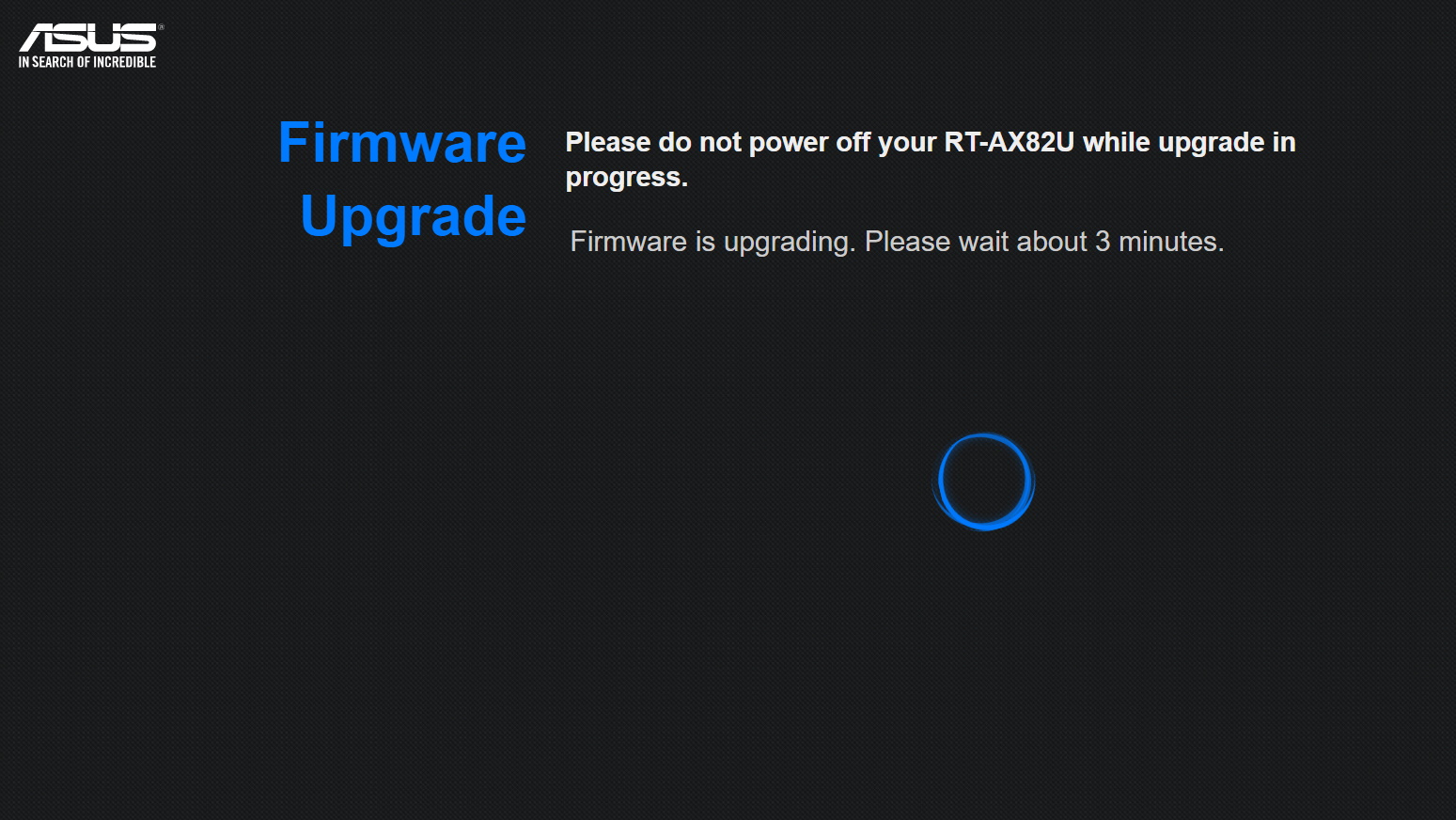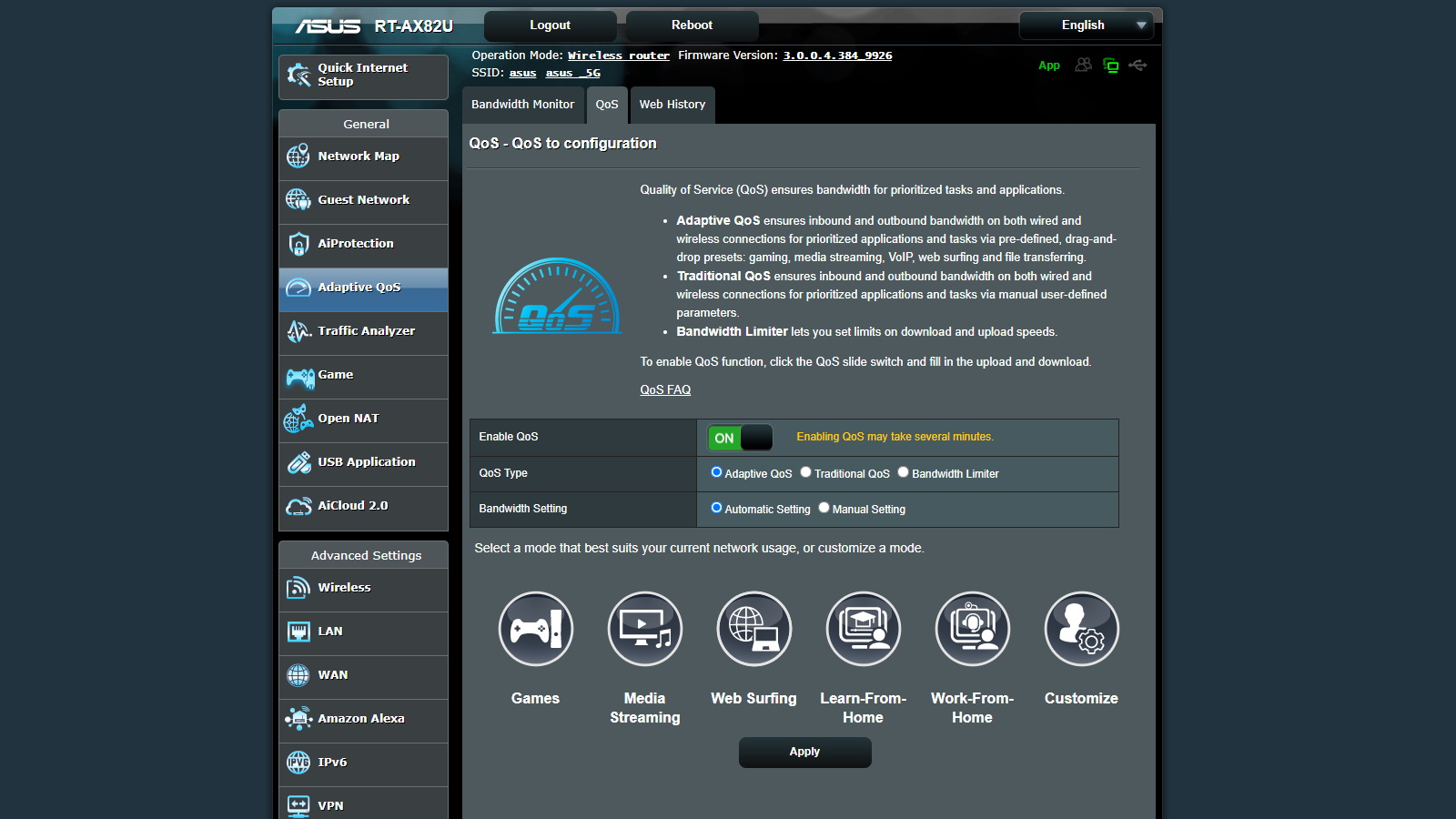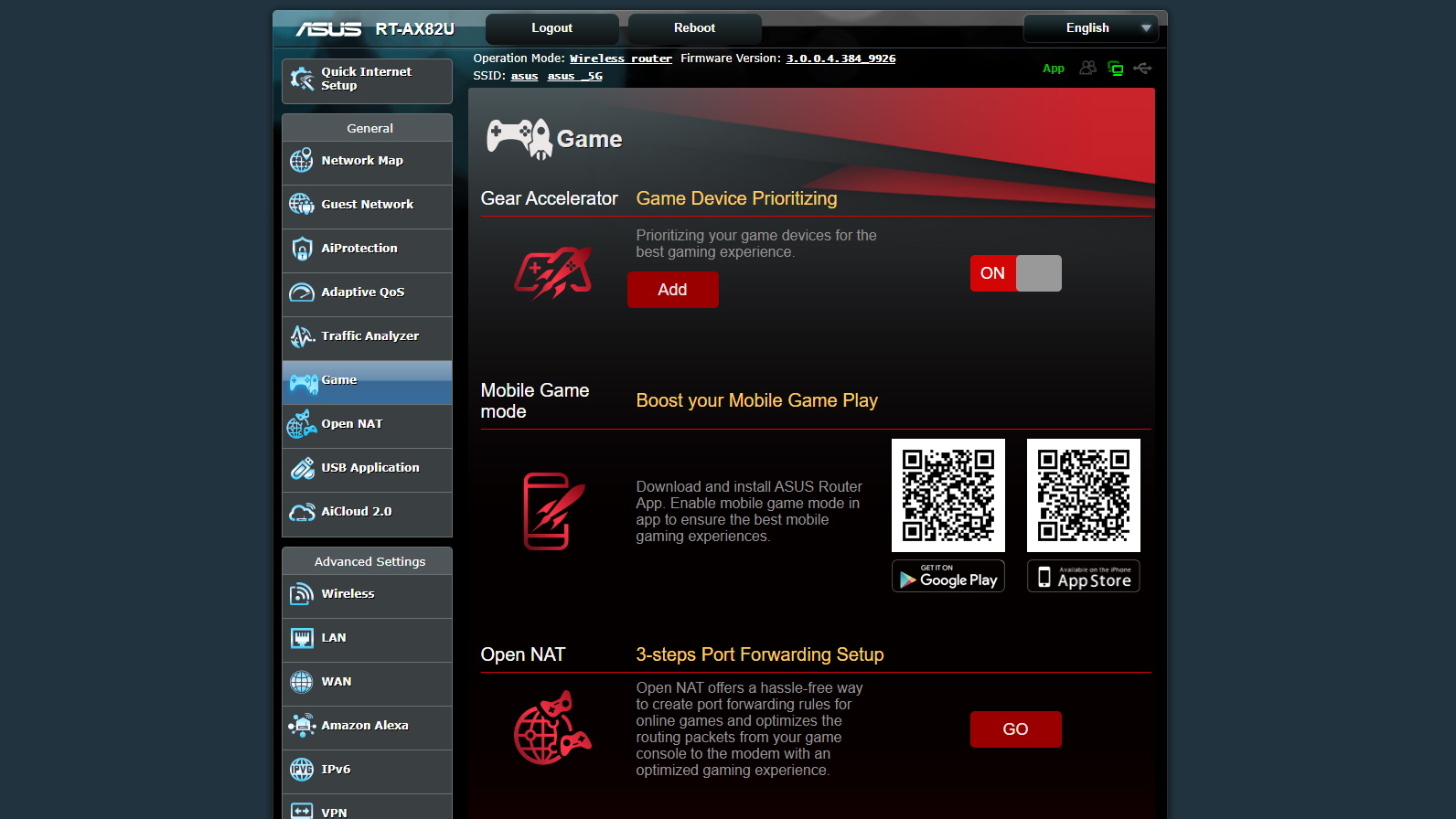Tom's Hardware Verdict
The Asus RT-AX82U is a powerful mid-range gaming router, offering a myriad of features at a reasonable $229 price. It also proved stable throughout testing and offers the latest in Wi-Fi 6 technology.
Pros
- +
Supports Wi-Fi 6
- +
Programmable LED RGB lighting
- +
Excellent range and throughput
- +
Integrated security
- +
Ease of setup
- +
Granular control of QoS modes
Cons
- -
Only four Ethernet ports
- -
Single USB port
- -
No integrated WTFast
- -
Dual-band only
- -
Minimal effect with gaming port
Why you can trust Tom's Hardware
Asus is well established in many aspects of the PC/gaming market, selling a wide range of motherboards, monitors, notebooks, network hardware and more. Today, we turn our attention to the company’s recent mid-range gaming router, the RT-AX82U. It brings Wi-Fi 6, easy setup and solid performance to the table, along with a typical stealthy exterior, complimented by some flashy RGB that both looks good, and is easy enough to turn off.
Design
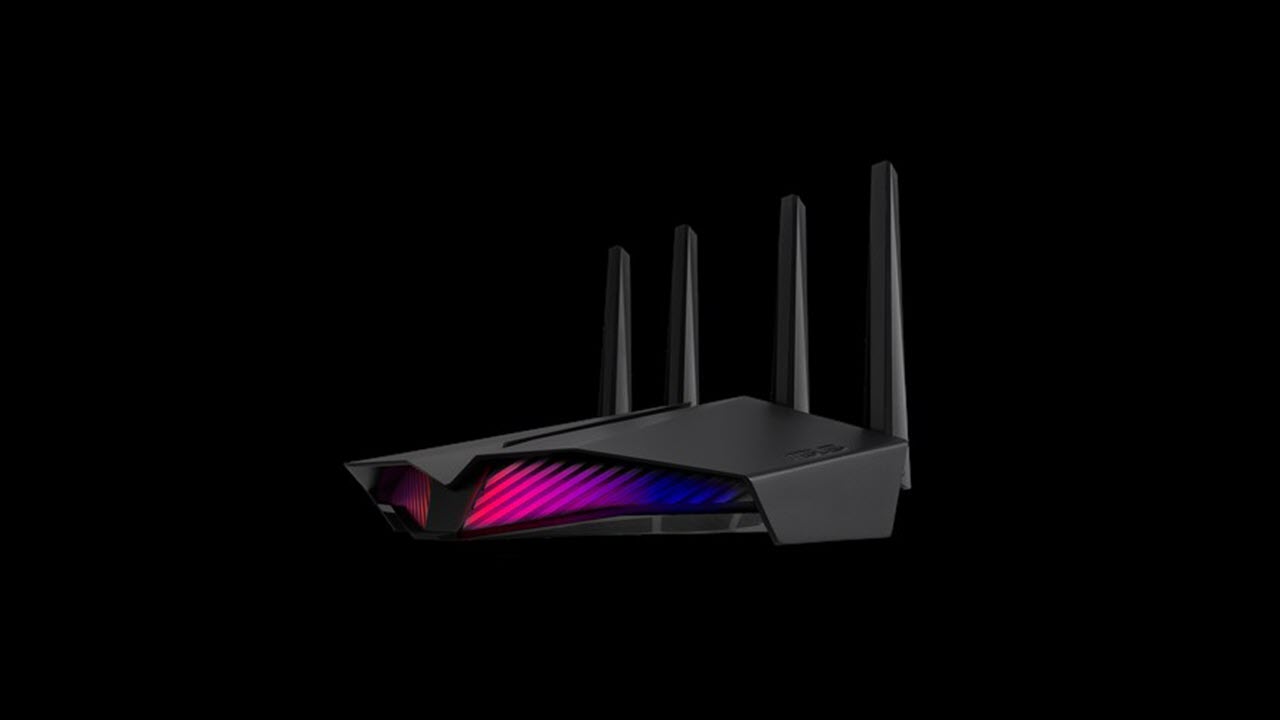
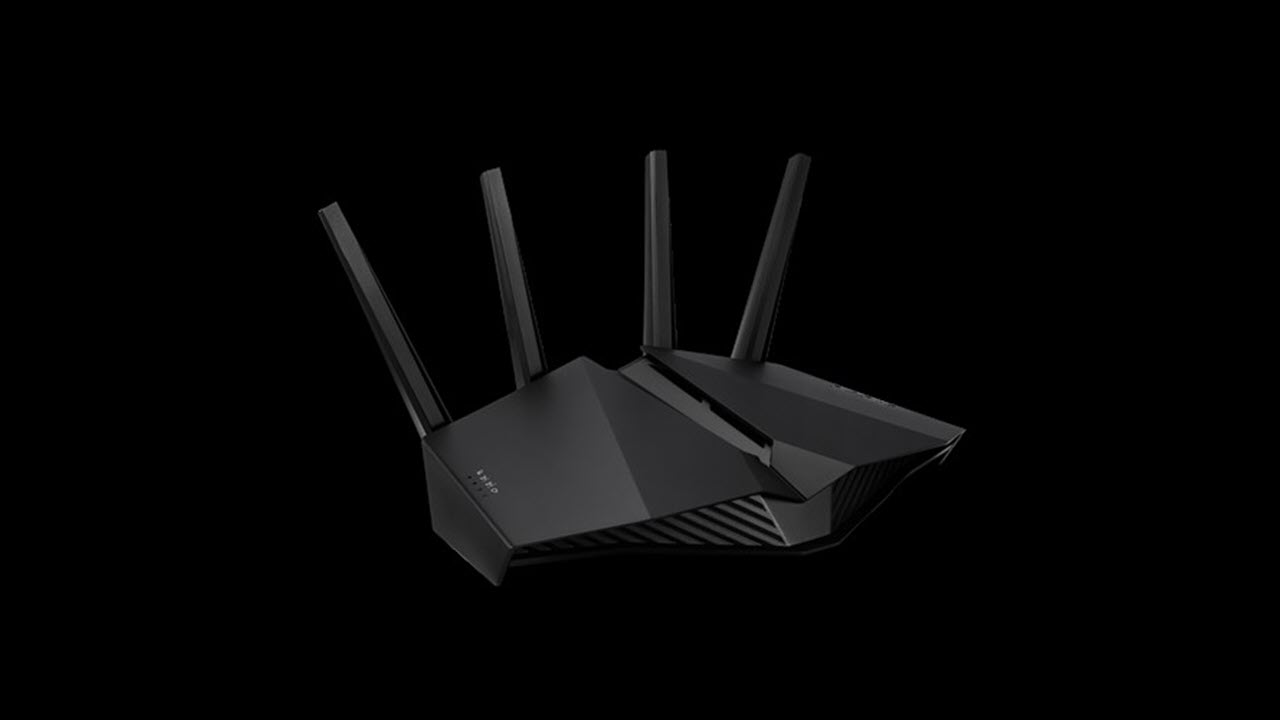
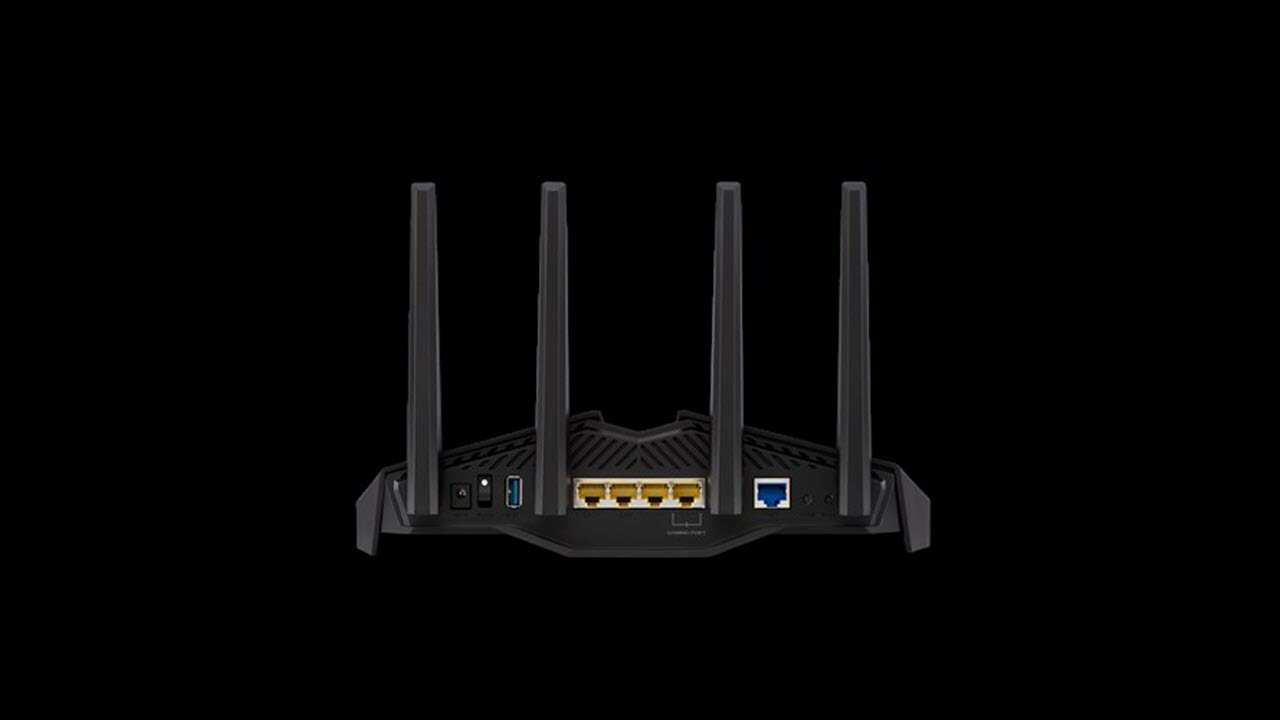
At times, it can be hard to define precisely what a gaming router is, as opposed to the more mainstream siblings. The Asus RT-AX82U causes no such confusion, however, and ticks off all of the right design boxes. This starts with the four vertical antennas, and then moves on to the matte-black finish, with an angular body that strikes a successful balance between artful and aggressive. The dimensions are 10.8 x 7.3 x 6.5 inches (275.5 x 184.4 x 165 mm) with antenna, and it weighs in at 1.6 pounds (740 grams).
There are four status LEDs that provide connectivity information at a glance. These designate power, a WAN connection, and each of the two Wi-Fi frequencies.
Perhaps the signature feature for a gaming router has become the LED lighting. For those that seek out this feature, and want every accessory to have RGB lighting, the RT-AX82U delivers the goods with a choice of "Lighting vibe." This includes several multi-color modes that have different lighting effects, which can be matched to different moods or applications.
The flip side of this is that not everyone wants such a colorful router, preferring their networking hardware to be more… unobtrusive. For those in the stealth router camp (for example for a bedroom deployment), one of the modes totally disables the light show.
Specifications
| Processor | 1.5 GHz tri-core processor | Row 0 - Cell 2 |
| Memory | 256 MB Flash, 512 MB RAM | Row 1 - Cell 2 |
| Ports | RJ45 for 10/100/1000 BaseT for WAN x 1, RJ45 for 10/100/1000 BaseT for LAN x 4 USB 3.2 Gen 1 x 1 | Row 2 - Cell 2 |
| Encryption | WPA3-Personal, WPA2-Personal, WPA-Personal, WPA-Enterprise , WPA2-Enterprise , WPS support | Row 3 - Cell 2 |
| Wi-Fi Technology | OFDMA (Orthogonal Frequency Division Multiple Access) | Row 4 - Cell 2 |
| Row 5 - Cell 0 | Beamforming: standard-based and universal | Row 5 - Cell 2 |
| Row 6 - Cell 0 | 1024-QAM high data rate, 20/40/80/160 MHz bandwidth | Row 6 - Cell 2 |
| Dimensions | 275.5 x 184.4 x 165 mm (WxDxH) with antenna | Row 7 - Cell 2 |
| Row 8 - Cell 0 | 275.5 x 184.4 x 65 mm (WxDxH) without antenna | Row 8 - Cell 2 |
| Weight | 740 g | Row 9 - Cell 2 |
| Price | $229.00 | Row 10 - Cell 2 |
The Asus RT-AX82U sticks to its mid-range aspirations in the specs department. From the hardware perspective, it’s based on a 1.5 GHz tri-core processor, with 512 MB of RAM and 256 MB of flash storage. It runs Asus’ proprietary OS.
As usual, the rear of the router houses the connection ports. This includes a single WAN port and four LAN ports, one of which is designated as a dedicated Gaming Port. Each Ethernet port supports 10/100/1000 transfer rates, though hopefully no one is still using anything less than a gigabit device. The USB port is 3.2 Gen 1x1 (effectively rebranded 3.0), and there is also a power switch that's useful for router reboots. Happily, we did not have any issues requiring a manual reboot during testing.
Get Tom's Hardware's best news and in-depth reviews, straight to your inbox.
Wirelessly, the big news is that this router supports the latest generation of wireless connectivity, Wi-Fi 6, previously designated as 802.11ax, and has 160 Mbps channels. This translates into speeds up to 5400 Mbps, if you combine both the 2.4 GHz frequency that has a max speed of 574 Mbps, and the 5 GHz frequency that tops out at 4804 Mbps (dual-band). Modern wireless standards are supported, including OFDA, MU-MIMO, beamforming, and the latest security standard of WPA3-personal. The router is also fully backward compatible to 802.11ac (Wi-Fi 5) and 802.11n (Wi-Fi 4) devices.
Setup and Features
Going from out of box to up and running (or more specifically, up and routing) took just a few minutes. As seen above, once plugged in, the router automatically goes into a setup process that prompts the user to go through the steps for a basic setup. This includes setting passwords for each of the Wi-Fi networks.
As older firmwares often have security holes, we appreciate that Asus included a step in the setup process to upgrade the firmware to the latest version. This ensures that all the latest security updates are applied, along with bug fixes. For our testing, the RT-AX82U was running firmware version 3.0.0.4.384.9948.
Once the initial setup is complete, we can get into optimizing the router for gaming. The router’s features are easily navigated via the left-hand panel. Under the setting "Adaptive QoS" we have a choice to enable QoS, which stands for Quality of Service. We went with the "Adaptive QoS," which then allows us to choose a mode.
This allows the router to then analyze traffic as it passes through it, and categorize it. For example, if Games is selected, the router will then give gaming traffic priority, sending it ahead of other types of traffic. This traffic shaping allows users to make the most of their bandwidth, facilitating a good gaming experience while also simultaneously streaming video or audio content.
There's also a games section of the setup. This includes a Gear Accelerator that can prioritize gaming devices "For the best gaming experience." A "Mobile Game Mode" is also available, but this requires downloading the Asus Router App to the mobile device. Finally, port forwarding is supported.
One minor downside is the lack of WTFast (a gaming private network service) integration, which some higher-end Asus routers have featured.
Security
The Asus RT-AX82U includes a number of security features. Network Protection with Trend Micro can provide antivirus on a network level, for no additional charge. Also, malicious sites are blocked at the router to keep the entire network secure.
Performance
When it comes to bandwidth, the Asus RT-AX82U performed quite well. We test routers both in a "near" location, at 8 feet away, and also at a "far" location, 36 feet away, on a higher floor, with ductwork in the way. The bandwidth test uses NetPerf software, with a Wi-Fi 6 client. For the latter, we have a laptop with an Intel Wi-Fi 6 AX201 160MHz wireless adapter, set to use the widest 160 MHz channel width on the 5 GHz frequency. (Note that Gamefirst VI software was disabled throughout testing, which can provide further client-side traffic shaping.)
| Header Cell - Column 0 | 2.4 GHz near | 2.4 GHz far | 5 GHz near | 5 GHz far |
|---|---|---|---|---|
| Bandwidth (Mbps) | 227.99 | 122.03 | 884.13 | 745.69 |
The Asus RT-AX82U delivers very solid speeds, particularly on the 5 GHz frequencies. Also impressive was the minimal dropoff in speeds on the far 5 GHz test. If you have devices that aren't in close proximity to the router, like a TV or console, this looks like a good option.
Next, we looked at gaming performance. For this, we used an Asus ROG G512 Strix i7 RTX 2070 16GB/512GB gaming laptop. For internal control, we ran the same tests on both wired and wireless connections.
For the wired tests, the laptop was connected to the router via a CAT 5e cable. We ran tests both with the connection to an Ethernet port on the router and then also while connected to the dedicated Gaming Port.
Wireless tests were done on the 5 GHz frequency (with a single 2.4 GHz test just out of curiosity to confirm our suspicions). We played the game Overwatch and measured the frames per second (fps) with the software FRAPS. While normally fps in a multiplayer game like Overwatch can vary quite a bit depending on where you are in a level and what's happening with other players. To minimize this variance, we ran our tests in the training level, where we're technically connected to the servers but there aren't a bunch of other players running around, shooting at us.
What's interesting about Overwatch and some other multiplayer games is that, contrary to what you might expect, frame rates actually are impacted by network latency and throughput. Basically, if your connection isn't consistent, your system has to do additional work to interpolate position and resend packets. This shows up both as spikes in ping time as well as reduced fps, particularly minimum fps.
In order to simulate gaming on a congested network, such as your roommates watching Netflix while you try to game, we stream ten 8K videos simultaneously from YouTube. (In case you are wondering, an 8k video needs about 50 Mbps of bandwidth, and we have a 300 Mbps cable connection, so it effectively saturates the connection, and then some). We measure the congestion using PingPlotter and count the spikes, which indicate when the network is over-congested. Finally, the Stats for Nerds tool in YouTube gives us an indicator of the dropped frames — which translates to stuttering and hanging video streams.
| Header Cell - Column 0 | QoS | Avg. FPS | Min. FPS | Avg. Latency | 8K Dropped Frames | Pingplotter Spikes | Notes |
|---|---|---|---|---|---|---|---|
| Ethernet | No | 109.3 | 97 | 64 | n/a | 0 | Row 0 - Cell 7 |
| Ethernet + 10 8k videos | No | 112.2 | 85 | 262 | 16.80% | 3 | videos barely played |
| Ethernet + 10 8k videos | adaptive, game priority | 120.0 | 400 | 252 | 34.00% | 6 | Row 2 - Cell 7 |
| Ethernet, gaming port | No | 111.6 | 96 | 63 | n/a | 0 | Row 3 - Cell 7 |
| Ethernet, gaming port, 10 8k videos | No | 109.9 | 94 | 255 | 32.40% | 3 | Row 4 - Cell 7 |
| Ethernet, gaming port, 10 8k videos | adaptive, game priority | 115.0 | 98 | 250 | 5.00% | 2 | Row 5 - Cell 7 |
| 5 GHz | No | 116.3 | 97 | 234 | n/a | 0 | Row 6 - Cell 7 |
| 5 GHz + 10 8k videos | No | 93.8 | 76 | 261 | 13.30% | 3 | Row 7 - Cell 7 |
| 5 GHz + 10 8k videos | adaptive, game priority | 111.0 | 95 | 255 | 32.20% | 3 | Row 8 - Cell 7 |
| 2.4 GHz + 10 8k videos | adaptive, game priority | 110.7 | 99 | 259 | 48.60% | 7 | Row 9 - Cell 7 |
For our baseline, with QoS disabled and no videos streaming, the fps in Overwatch is 109 on Ethernet, and 111 on the Gaming Port — a minimal difference between the two that translated through on the rest of the tests. Somewhat surprising is that fps improves slighting when we're connected wirelessly on 5 GHz, checking in at 116 fps.
When we ramp up the network congestion and stream videos, the fps remains pretty consistent on Ethernet. It does take a modest hit to performance when connected via 5 GHz, dropping down to a still very playable 93.75 fps. Obviously, the game of choice and your specific hardware will impact performance as well.
With the addition of the QoS, set to gaming priority, in each case the fps increased compared to our baseline results. On the gaming port, we measured a 4.7% increase, while the regular Ethernet port showed a 9.7% improvement. Compared to the congested testing, the 5 GHz Wi-Fi also showed an 18.7% increase in fps, though performance was 4.6% slower than the uncongested network performance. Regardless, the results demonstrate the value of the QoS feature.
While gaming can be done on the 2.4 GHz frequency, take note that with this older technology, the 48.6% dropped frames result was the highest of any of the tests. In addition, we had the highest number of Pingplotter spikes on this frequency. Friends don't let friends game on 2.4 GHz.
What's interesting is that, even though ping latency is much higher, that doesn't really correspond to the in-game latency. (Tracking actual game network latency is far more complex than what we're doing with PingPlotter.) You can see that with QoS enabled, the average ping times drop slightly in the overloaded configuration. More importantly, actual gaming network traffic gets prioritized above the video streams, which means latency and performance are mostly back to where we started.
Pricing and Bottom Line
The Asus RT-AX82U sells for $229. This puts it solidly into the upper mid-range segment of gaming-focused routers, and it offers considerable value at this price point. We were impressed by the high fps scores, the option for gaming centric QoS settings, and the integrated security. Areas for improvement include the single USB port, the limited Ethernet ports, the minimal effect of the Gaming port, and the lack of WTFast on a gaming router.
Overall the Asus RT-AX82U offers a good combination of throughput and gaming performance, all in an attractive, reasonably compact package. We have several other gaming routers (and even non-gaming routers) that we'll be testing, but we started with Asus as its routers have a good reputation. This is currently the one to beat, and we're looking forward to seeing how the other routers stack up.

Jonas P. DeMuro is a freelance reviewer covering wireless networking hardware.

